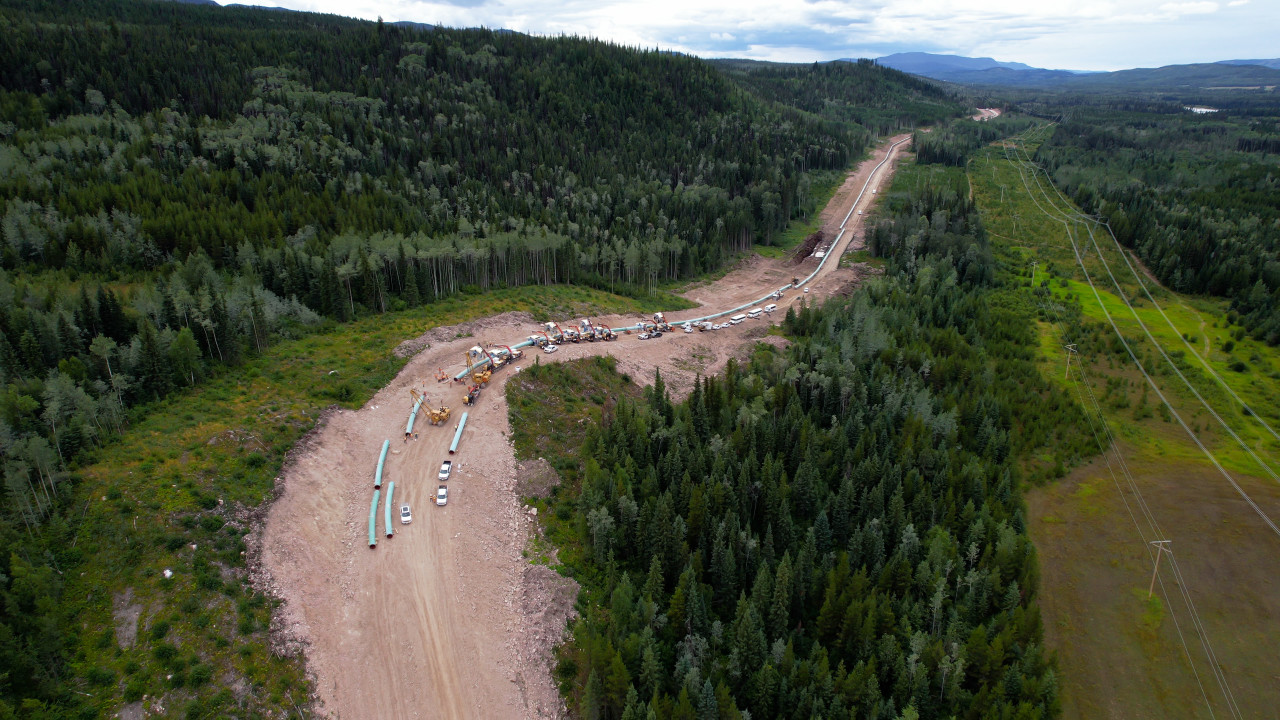
Protesters are again illegally blocking access to workers building the Coastal GasLink pipeline project, despite local First Nations leaders urging them to stop.
The activist actions are blocking the opportunity to build stronger Indigenous communities and help lower the world’s greenhouse gas emissions by reducing reliance on coal.
Here are five myths the protesters use, and why they’re wrong.
Myth: First Nations are against it
Wrong. All 20 elected First Nations governments along the 670-kilometre pipeline route from Dawson Creek, B.C. to the LNG Canada terminal on the coast at Kitimat support the project and have signed agreements that engage them in development. This includes five Wet’suwet’en bands.
The project has been “exceptional” in its relations with First Nations people, says Layne Boucher, co-owner of Houston, B.C.-based Getumdone Contracting Ltd.
“They really listen and I think they care, and they’re willing to incorporate the needs and concerns of local Indigenous people into their project planning and strategy.
Myth: It harms Indigenous people
Wrong. Jobs, revenues and economic benefits from Coastal GasLink strengthen Indigenous communities.
In addition to project benefit agreements, more than one-third of work so far has been conducted by Indigenous people, with $825 million in contracts awarded so far to Indigenous and local businesses, Coastal GasLink says.
Meanwhile, the associated LNG Canada project has awarded over $2.7 billion in contracts to Indigenous and local businesses.
Indigenous people are helping shape the way the pipeline is built and managed. The project has completed 19 traditional land use studies with local Indigenous communities, which are used to refine project planning and promote respect for the land and the people along the pipeline route.
Wet’suwet’en community members are participating as construction monitors and community liaisons with the project, out on the route each day observing and reporting on construction activities, Coastal GasLink says.
Wet’suwet’en community workforce accommodation advisors also live and work in the project’s lodges, sharing Wet’suwet’en culture with the workforce and helping build healthy connections with communities.
At the end of the Coastal GasLink route, the pipeline meets the LNG Canada export terminal on the traditional territory of the Haisla Nation. Chief Councillor Crystal Smith says the arrival of projects like LNG Canada and Coastal GasLink has been transformational for her community, and that protests are holding her nation back.
Myth: It will harm the environment
Wrong. Natural gas from Coastal GasLink will help lower world emissions by reducing reliance on coal. The pipeline will supply LNG Canada, the country’s first liquefied natural gas (LNG) export terminal. Both projects are more than 50 per cent complete.
Switching from coal to natural gas for electricity generation around the world on average reduces emissions by 50 per cent, according to the International Energy Agency (IEA).
In Asia, switching to Canadian natural gas could reduce emissions by up to 62 per cent, according to a June 2020 study published in the Journal for Cleaner Production.
Along the pipeline route, Coastal GasLink teams are taking care to protect the environment as they build. Case in point, the project will use “micro-tunnelling” to cross underneath the Morice River in Wet’suwet’en territory near Houston, B.C.
According to the Canada Energy Regulator, which closely monitors pipeline water crossings at all stages, “trenchless” methods like micro-tunneling require little or no construction in the water, meaning there is little to no disturbance to the river bed or banks.
Myth: Coastal GasLink is not needed
Wrong. Right now, Europe and Asia are facing escalating shortages of natural gas that Canada can help fill, with Coastal GasLink and LNG Canada up and running.
Global demand for LNG is expected to double between 2020 and 2040, driven by emerging economies improving their standard of living while reducing reliance on coal.
“Gas is growing aggressively, and Canada needs to be on the forefront of that more,” Rafi Tahmazian, senior energy portfolio manager with Canoe Financial, told a recent webinar hosted by the Macdonald-Laurier Institute.
“We need to be building out infrastructure to provide this cleaner fuel.”
Myth: It is bad for Canada
Wrong. Coastal GasLink and LNG Canada are helping Canada’s economic recovery and will provide jobs, government revenues and environmental leadership for decades to come.
There were 4,688 people working across the Coastal GasLink project as of November 30, 2021, in addition to approximately 4,000 working at the LNG Canada site.
The LNG export terminal alone is expected to generate approximately $23 billion in government revenues just in B.C. over the next 40 years — new resources for health care, schools, child care and other government-supported services, the province has said.
Canada’s LNG opportunity could spark an employment wave that rolls across the country over the long term, according to a 2020 report by the Conference Board of Canada.
In a scenario based on relatively conservative expansion, the Conference Board estimated that Canadian LNG could support 96,550 direct, indirect and induced jobs annually across the country between 2020 and 2064.
“Post-pandemic, the Canadian economy will need stimulus. An LNG industry brings long-term investment and production that can contribute to the country’s economic recovery,” the Conference Board said.
The unaltered reproduction of this content is free of charge with attribution to Canadian Energy Centre Ltd.